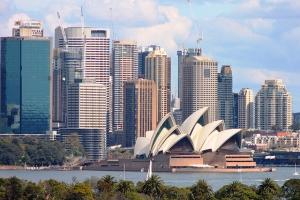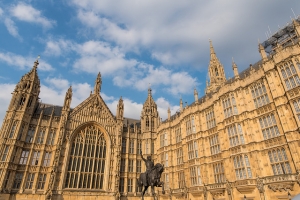Support migrant centric journalism today and donate

During the visit to the US in January 2017 to meet newly installed President Donald Trump, UK Prime Minister Theresa May, planned to discuss how to boost US-UK migration - according to sources within the British government. May was in the US partly to discuss an early trade deal once Britain has left the European Union.
Further details of May’s meeting with Trump came just days after Australia’s high commissioner to the UK, Alexander Downer, confirmed that talks between the UK and Australia had commenced over a potential free trade deal. However, Downer said ‘for any deal to be struck, Britain would have to relax its Tier 2 visa rules.’
The US visa system is probably the most complex in the World. It is very difficult to come under visa categories such as the L1A and L1B intra-company transfer visas and say the H1B specialty occupation visa for graduates. In some cases you can come under the E2, E1 and E3 treaty visa schemes to gain entry to the US. Trump seems to be want to make these visa schemes even more restrictive.
However, May’s approach to trade deals with the US and Australia – which seem to hinge on the expansion of highly skilled migration – appear to be in stark contrast to her approach to a trade deal with India.
During a visit to New Delhi in November 2016, Mrs May flat out refused to increase the number of highly skilled visas made available to Indians, despite the possibility of boosting the prospects of agreeing any future trade deal.
Sanwar Ali, Editor of workpermit.com News reviews US and UK Visas policy
Both the US and UK have restrictive visa policies. It is hard to imagine that it will become much easier under Donald Trump or Theresa May. Donald Trump is under pressure to keep his campaign promises of reducing the number of people entering the US on work visas such as the H1B visa and L1 visa schemes. The UK Tier 2 visa scheme and Tier 2 sponsorship licence scheme is also a restrictive visa scheme. In the US it is very difficult for both Houses of Congress to reach agreement on changes to US visa regulations. Because of this the US visa system has not changed that much in many years. In the UK the Government is trying to reduce the number of people entering on UK visas. For the time being it seems that it will actually be more difficult for Americans to work in the UK and also more difficult for British people to work in the US.
May’s non-EU immigration policy remains unclear
So far, the Prime Minister has not yet clarified what a non-European immigration policy will look like post-Brexit. After replacing David Cameron in July 2016, May immediately rejected the leave campaign’s demands for an ‘Australian-style points-based system’, stating that ‘Britain would not have full control over who enters the UK if using such as system.’
However, it’s worth noting that the UK’s Tier 2 immigration route already uses a points-based system to determine if highly skilled, non-EU workers qualify for entry into Britain.
Meanwhile, May has also said that the Government will not go ahead with promises made by the leave campaign that Brexit would result in an immigration boost from countries such as India and Pakistan in order to combat the UK curry industry’s skills crisis.
It’s now becoming increasingly clear that the Prime Minister plans to shape Britain’s post-Brexit immigration policy around any early trade deals it can negotiate once the UK has left the EU, according to a report published in The Guardian.
Furthermore, it’s becoming more apparent that May’s policy of keeping Britain ‘open to the brightest and the best’ is structured around striking trade deals with countries like the United States, Australia, Canada and New Zealand, rather than India or China, The Guardian report claims.
UK Visa policy a danger for business people and highly skilled workers
According to The Guardian report, there’s a ‘danger that UK immigration policy for business people and the most highly skilled could become exclusive and based on the old “kith and kin” – an old English phrase meaning familiarity - white Commonwealth of Australia, Canada and New Zealand by default, if not by design.’
In regards to America, sources within the British government told The Telegraph that Theresa May wants to look at options that would make it easier for US citizens to work in the UK and vice-versa. The most recent data shows that there are approximately 181,000 US-born citizens living and working in the UK.
There are approximately 758,000 Brits residing in the US. A senior, UK government source said that: “There is potential to grow these numbers.”
Trump’s ‘America First’ US Visa policy
According to The Guardian report, ‘it may well be that as Donald Trump implements his ‘America First’ immigration policy, a UK trade deal could guarantee current British access to the US labour market, as opposed to extending it.’ However, the report warns that an increase in the migration of Americans to the UK could be the price Britain has to pay.
Alex Downer said Australia is eyeing similar terms as part of any trade deal with the UK. In a recent interview with BBC Radio 4’s Today programme, Downer said: “We would want to see greater access for Australian business people working in the UK and that’s often been a part of free trade negotiations – it hasn’t always been by the way, but it’s often been part of our free trade negotiations.”
“It might just make it a bit simpler actually: for example, an Australian company that invests in the UK might want to bring some of its executives to the UK. That can be done with what are called Tier 2 visas, but maybe that could be made a little bit easier,” Downer added.
May’s immigration policy seems to have a preference for Old Commonwealth Countries
Currently, non-EU migration accounts for more than 50 per cent of the UK’s annual net migration total of approximately 335,000. Theresa May vowed to make strides in cutting this down to under 100,000.
However, the warning signs signal anything but reducing immigration, rather a future UK immigration policy that could result in a rise in the number of Americans, Australians, New Zealanders and Canadians arriving in the UK, while increasingly tighter restrictions await Indian, Pakistani, African and Eastern European nationals.





















